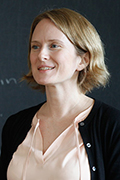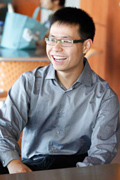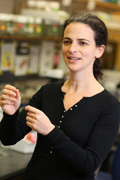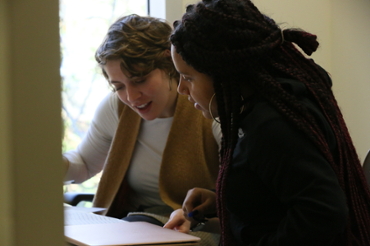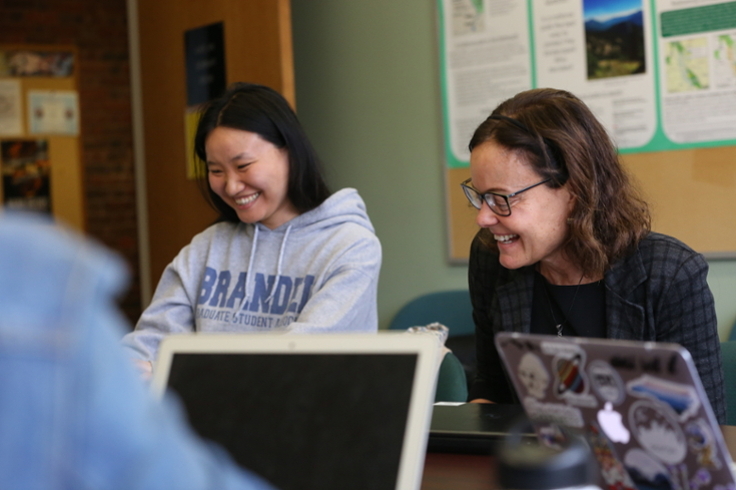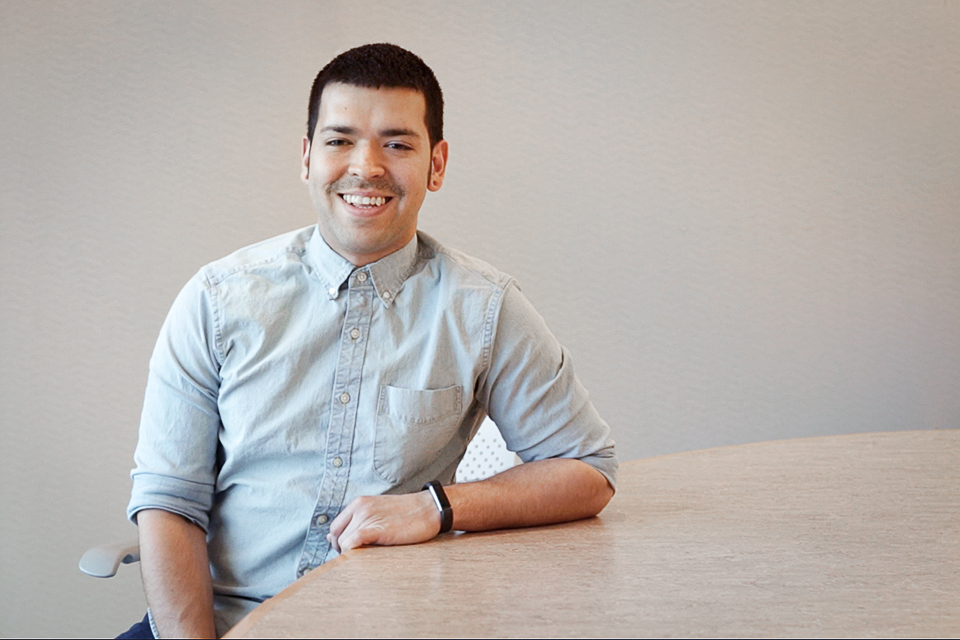Raul Ramos Pays It Forward in His Home State of Texas
May 2, 2018
Helen Wong | Graduate School of Arts and Sciences
Raul Ramos, a fourth-year Ph.D. candidate in Neuroscience, spent the five-hour flight from Boston to Austin, Texas trying to think of what to say to a classroom full of adolescents who had been sentenced to juvenile detention, like he had been once when he was a teenager.
“I was trying to get into the mindset of it all,” he says of those nerve-wracking hours before arriving in Austin. “I was trying to remember how I felt when I had been in their shoes.” He had put together a talk and a script, but the moment he entered the first classroom at the Austin Alternative Learning Center, all of it went out the window. “Instead of giving a lecture, I had an actual conversation with the kids,” says Ramos. “They could relate to me. I was someone who looked like them, talked like them, moved like them. So they listened when I told them about my story and how, despite what they were facing now, their outcomes could be different too.”
Ramos first started working with high school students after he moved to Waltham. Anique Olivier-Mason PhD’12, Director of Education, Outreach and Diversity at the Materials Research Science and Engineering Center had arranged “Pizza Talks,” a program where graduate students in the sciences visit classrooms at Waltham High School and discuss their decisions to pursue careers in science, their experiences as investigators and their research. The program has been a great success and now serves as the model for similar talks taking place nationally, sponsored by the American Association for the Advancement of Science (AAAS). Ramos volunteered to give a talk when he first heard about the program.
“Waltham High has a large Hispanic student population,” says Ramos. “These groups underrepresented in science. I really liked going to speak to them and talking about my own journey and its relation to my identity.” AAAS became aware of this community outreach and contacted the university to learn more. Ramos has always been open about the troubles in his own past, so when AAAS were looking for scientists to speak to students in alternative learning centers in Austin, they asked him if he would like to go. “I said yes, of course,” says Ramos. “I’m from Texas originally, so I agreed to fly down and talk to the kids.”
What began as originally just one or two schools became six upon his arrival in Austin as word got around of his visit. During the trip, Ramos gave sixteen talks and spoke to around two hundred students. “I went to juvie centers, alternative learning centers, drug rehabilitation facilities,” he says. “The level of engagement was amazing. For every kid that didn’t want to engage, there were a few more who wanted to talk to me and learn about how I’d gotten to where I am. One of the most frequent questions they asked me was, ‘Sir, what do I do when I get out of here?’ and I would tell them the truth. I told them that once they got out, they would have to actively avoid situations and people that would get them in trouble. I said that if that meant having to hole up in their room to study and get away from it all, then doing that would absolutely be worth it in the long run. Their environment matters.”
But even after telling them his advice, Ramos knew that advice alone wasn’t going to be enough for many of the kids he was speaking to. “You need a support network,” he says. “A lot of these kids don’t have that. Some of them are safer in detention than at home. So many of them are angry–why wouldn’t they be? They’re supposed to become upstanding members of society, but the way the system goes about that is to lock them up and isolate them. That’s not how rehabilitation should work.”
At some of the facilities he visited, Ramos saw kids as young as eleven or twelve being escorted by armed guards from classroom to classroom despite some of them being barely half his size. For Ramos, the sight was jarring. “It looks like overkill,” says Ramos. “I know they’re here because they did something wrong, but at the end of the day, they’re just kids.”
It also struck Ramos, as he made the rounds in each facility, that the kids incarcerated at these centers were all people of color despite Austin being in a majority white part of Texas. “Brandeis is all about recruiting underrepresented minorities into its science programs,” he says. However, the challenges of recruiting students of color for doctoral programs in science are significant, and Ramos realized during his trip to Texas that “part of the reason for the absence of black and brown individuals in science was that so many of them, who could potentially be scientists someday, are stuck in juvie–stuck in environments that deprive them of opportunities and healthy role models.
“And people like me that manage to get an education, we make it out and we leave. We come over here to go to college, we leave Laredo [Ramos’ hometown], and these kids don’t get to have good role models. They make mistakes fueled by a terrible home environment and get stuck in the juvie-to-prison pipeline. They repent and feel bad in juvie, but once they get out, if they don’t have a support network, it starts all over again. The system tries them as full adults at seventeen, when they’re not even old enough to vote. Things have to change. I want to help make that happen and to show them that right now, there are still opportunities open to them.”
Despite all of the system’s shortcomings, the alternative learning centers and similar institutions are making a tangible difference. “The system’s not perfect,” says Ramos. “It’s deeply flawed. But things are already better now than when I was in. Back then, I was put in what would conventionally be considered a prison cell. At least most of these kids get an education, space to walk, and are surrounded by people who care about them. Everyone working at the Austin Alternative Learning Center was so motivated and clearly cared about the kids.”
Upon his return to Brandeis, Ramos decided that he would dedicate more time to community outreach and consider the possibility of working in science policy after earning his doctorate. He wants to do work that not only has value in the scientific world, but that also actively helps bolster diversity and inclusion in the field, helping fight back against larger societal and institutional structures that disadvantage people of color.
“We need representation to show kids that the journey is possible,” says Ramos. “The cards feel like they’re stacked almost the entire way through. I’m going to do whatever I have to do to get the message out there to those kids who are hardest to reach and who need to hear from us the most.”
Read More
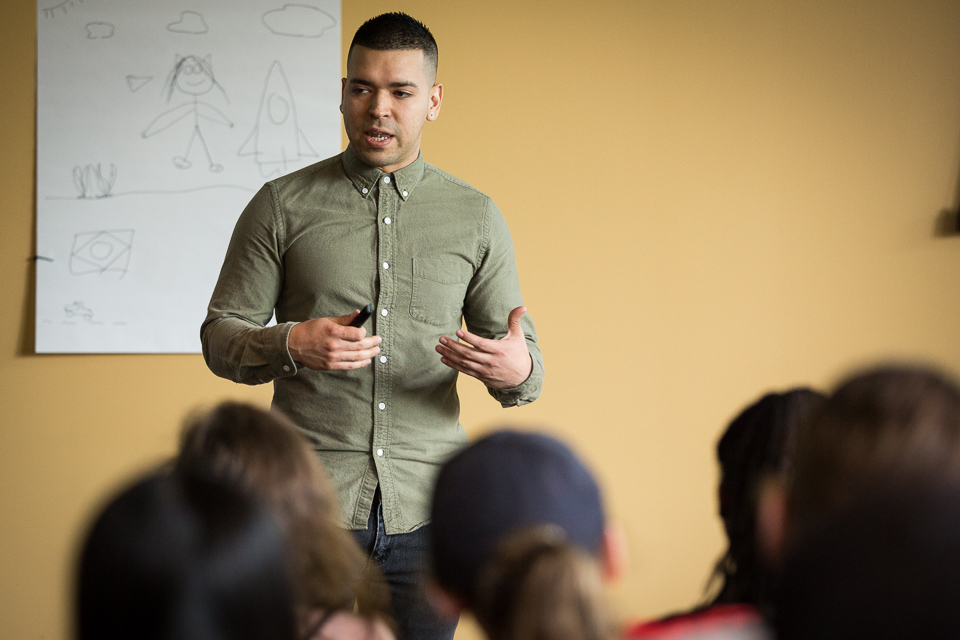
Read our first profile about Raul and learn about his journey to Brandeis, how he became a neuroscientist, his reasearch in the Turrigiano and Katz laboratories, and how he first became involved with the University's community outreach in Waltham.
